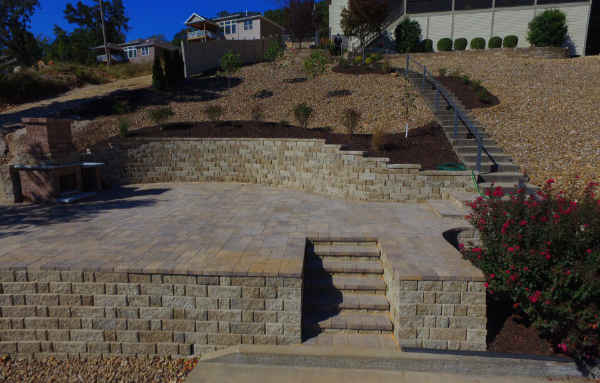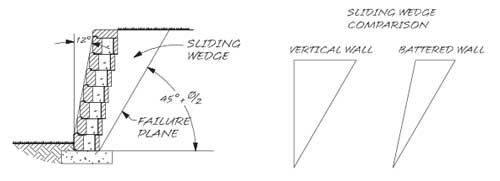Retaining walls are a useful structural part of several building structures. Stone can be used to create big rectangular walls for Retaining Walls Melbourne on hillsides or even for building garden beds that were raised on stilts. They may also be readily integrated into other architecturally-correct constructions and produce striking accent pieces.
Retaining Walls On Hills

Many distinct kinds of land properties exist in many regions, including clay-slate, sandstone, and limestone. Slopes in mountainous areas may receive more rain than other areas. Additionally, hillsides with sharper angles and flatter ridges are more susceptible to drainage, runoff, and erosion. Since these attributes are more prevalent in mountainous regions, retaining walls may be built near sloped regions at which the gradient is more notable. For these reasons, developers can build retaining walls on hillsides and along rivers.
Retaining Walls On Hills
Since many basins and creeks drain into specific levels, slopes and intervening hills are part of property management landscape. Landscape architects consider a number of features that might affect the durability and usability of a roof and surrounding regions. For example, sloping areas close to the base of a mountain are more vulnerable to mudslides and flash flooding. At exactly the same time, steep hillside canals may be difficult to access. The slope of an intervening hill can affect the water runoff in the river and decrease its ability to infiltrate surrounding regions. Retaining walls on steep hillside slopes and on intervening hills may be beneficial, though they don't alleviate other environmental problems.
The mixture of steep slopes and deserts creates conditions which are both lovely and uncomfortable for the majority of people living in the area. People that live in these scenic areas have a tendency to devote a good deal of time on their feet. Slopes in between hills can present a problem when it comes to housing development. Housing developments built on sloping regions will generally have higher costs per unit since the slope presents additional obstacles to developers. Most importantly, people residing in steep hills and valleys confront serious safety risks.
When a community wants to build a residential construction in these locations, the initial step would be to integrate features that will mitigate the hazards of walking on the slopes. Retaining walls offer a safe barrier around a locality, and in addition, they give an attractive landscaped garden at the bottom of this wall. However, the role of retaining walls is not solely practicality except to provide protection against natural forces along with the erosion of slopes and basins. The kind and amount of armour stone needed depends on the characteristics of the terrain, the thickness of snow and ice, the frequency of rain and snowfall, the flow rate of rivers and streams, and also the character of the soil.
There are a couple options for defence against natural hazards. Slopes found under the surface are more challenging to keep as a result of the growing risk of mud slides and other sorts of flash flooding. Residential communities using a mix of residential properties and business institutions will probably need to install fences that could withstand heavy storms and strong winds. Retaining walls which protect against sudden slides and falls are another option for individuals residing on slopes. These structures should be constructed of durable materials like concrete or granite to ensure their structural integrity in case of heavy storms.
Areas that experience considerable change in altitude such as scenic areas, beaches, terrains, and low lying regions usually pose unique challenges when it comes to designing a Retaining Wall. Construction on hilly terrain necessitates a different approach compared to construction on flat places. It’s imperative to estimate the gradient of the mountain. Retaining walls are normally constructed on top of picturesque terrain to provide a firm and robust frame to limit the motion of large boulders and debris during power outrages or through times of significant rain. For places which are considered very hilly, a series of steps may be built to protect people from slipping.
In some cases, the need to revise the design of a Retaining Wall appears due to environmental concerns. This may be due to inappropriate construction procedures, soil requirements, the presence of poisonous substances, or excess development of land. In this kind of circumstance, the local governing board should take action to mitigate the probable dangers to the public security and the environment. If required, a local planning authority can make a decision regarding proposed changes in the plan of a mountain wall or cutting. The same considerations should be taken into consideration if a district government is redesigning a National Park or a designated area because of environmental issues.


